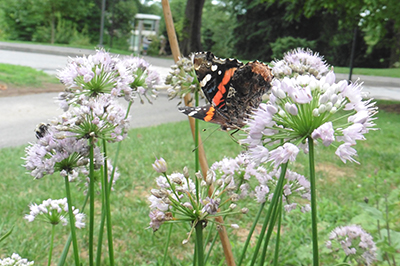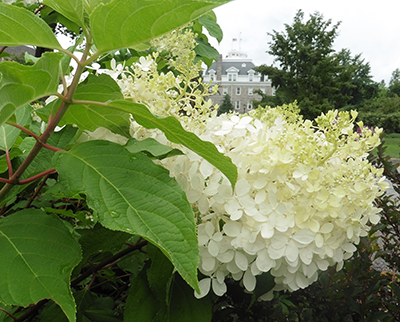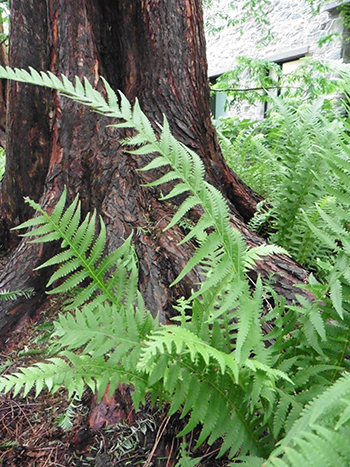
Plants of the Week: July 23

Allium ‘Summer Beauty’
Looking at the mass of pale purple globes and green foliage of this plant, one cannot imagine that Allium ‘Summer Beauty’ is related to a common cooking ingredient—onions! Although it would be unwise to eat the bulbs of these plants as they are bred to be ornamental, these cheery floral globes in the rose garden are close relatives to the vegetable you probably have in your kitchen! The ornamental cultivars (‘Summer Beauty’ included) can be distinguished from their edible cousins by their much denser umbels of flowers. ‘Summer Beauty’ is a late bloomer for an ornamental Allium, and its mid- to late-summer blooms add interest to the garden after many other flowers are past their prime: a great addition to any garden! photo credit: E. Fogarty

Hydrangea paniculata ‘Silver Dollar’
‘Silver Dollar’, like all panicle hydrangeas, is a late bloomer for a hydrangea. This shrub doesn’t come into its own until mid-summer, with blooms persisting until fall. It stands out amongst the crowd. At 6-8 feet in height, ‘Silver Dollar’ is tall enough to be branded a small tree by some nurseries; however, it is suitable for small yards. ‘Silver Dollar’ features bright, cone-shaped flowers, which begin greenish and age to white. It is adaptable for most soils and levels of sun. Cut this hydrangea back every year and it will return in full force the next! Check out this stunning hydrangea in the Terry Shane Teaching Garden. photo credit: E. Fogarty

Phegopteris decursive-pinnata
If you have damp soil with a decent amount of shade, conditions seen in our Metasequoia Allée, this fern is for you! A native to Asia, Phegopteris decursive-pinnata is compact, 1-2 feet wide and up to 1.5 feet in spread, with delicate, feathery fronds. Phegopteris decursive-pinnata color ranges from a bright green in full shade to a pale, almost-white green in partial shade. The genus Phegopteris, if translated from Latin, means “beech fern,” possibly due to its habit of growing under canopies of trees. This fern can spread to fill an area, but not so quickly as to be overwhelming. Luckly, it is resistant to both rabbit and deer browsing. Phegopteris decursive-pinnata is the perfect choice to add an extra bit of texture to a woodland environment! photo credit: E. Fogarty





No Comments